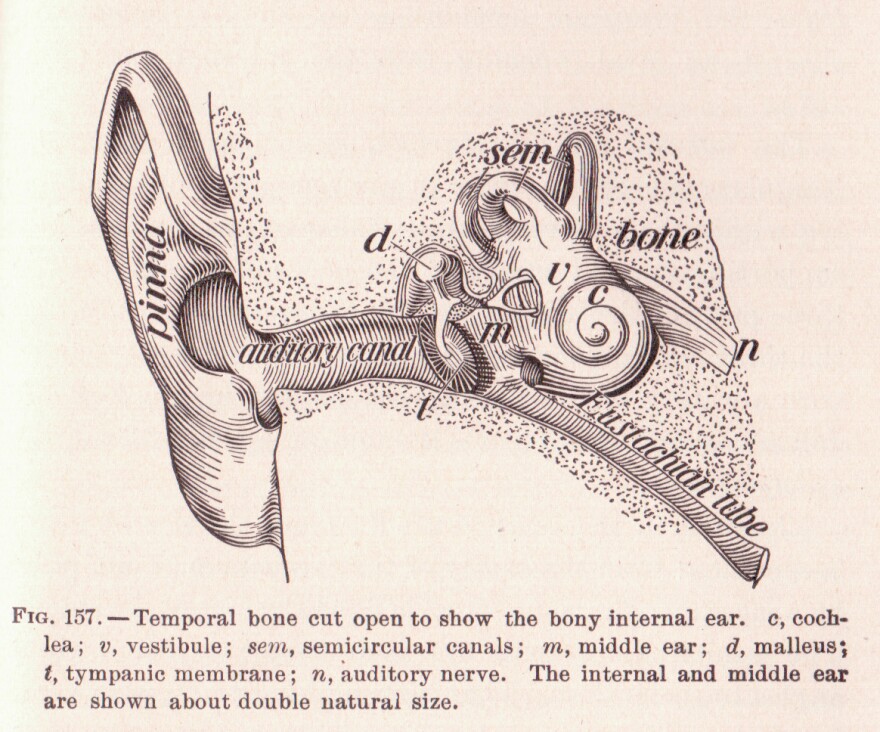As many young people try out the new headphones and earbuds they received as holiday gifts, doctors have a warning: they pose a potential health hazard. Studies show hearing loss among kids and teens is up about 30 percent higher than it was in the '80s and '90s.
Experts believe earphones are part of the problem.
It’s all about volume and time exposure. The louder the sound -- the faster the damage to your hearing.
As a benchmark, a normal conversation is about 60 decibels -- considered a safe level, not loud enough to cause damage. But increase it to 85 decibels, and that’s about the volume of your vacuum cleaner. Now we’ve reached a critical level.
Michele Abrams, clinical audiologist at Southern Connecticut State University, explained the intensity-time tradeoff when sound is measured.
"When we think about decibel levels, when we think of loudness levels, it’s really incremental," she said. "It’s a logarithmic scale. It’s not a linear scale. So we know that 85 db is that critical level. Eighty-five db, eight hours a day, that’s your maximum. If it’s 90 db -- five db greater -- you have to cut your time in half."
Many smartphones, tablets, and music devices can generate maximum volume levels of over 100 decibels, loud enough to cause hearing problems after just 15 minutes a day.
The damage is caused when hair cells in the inner ear, which help transmit sound to the brain, are exposed to loud sounds.
If you’ve ever been to a concert and experienced ringing in your ears afterwards, that’s a sign of damage. Sometimes that damage is only temporary, but sometimes it’s permanent.
Abrams said it all depends on how loud, how long, and how often.
"Repeated exposure damages your hair cells," Abrams said. "It would be like walking on blades of grass and you step on the grass and the grass flattens, but it comes back up. And the more you do it, the more it stays down. And eventually it doesn’t come back up, so it becomes permanent.”
And earphones, because they’re inserted directly into the ear canal, can be a little more problematic, according to Dr. Maryellen Flaherty-Hewitt, medical director for Pediatric Primary Care at Yale New Haven Children’s Hospital.
"The other issue with the earbuds is many of the teenagers are using what comes with their devices, which are not custom fit, so they allow in a lot of ambient noise, which then makes them turn the volume up," she said. "They want to block out the ambient noise, they turn the volume up, now it’s at louder decibels."
The damage is usually gradual, but it’s not just that you’re hearing at a lower volume -- sounds become muffled and distorted over time.
Back at Southern Connecticut State University, audiologist Michele Abrams gave a demonstration in a small lab. Listen below to what it sounds like to hear normally, and to hear with varying degrees of damage.
What does hearing loss sound like? Michele Abrams from @SCSUtweet demonstrates to @lmackwnpr pic.twitter.com/yGfOgKjT17
— Connecticut Public (@wnpr) December 28, 2016
When it comes to listening to mobile devices how much is too much and what’s too loud?
"There’s generally what we consider to be the 60/60 rule," said Abrams. "So, 60 percent of the volume for 60 minutes. That should be your maximum."
And there are some other possibilities, like custom earphones designed to drown out background noise for listening at a lower volume, apps that measure decibel levels to show noise exposure.
And because it’s easy for volume levels to creep up, some smartphones offer the ability to go into settings and limit the maximum volume. But a recent investigation by The New York Timesfound that not all volume-limiting technology works.
Tucker Ives and Heather Brandon contributed to this report.





